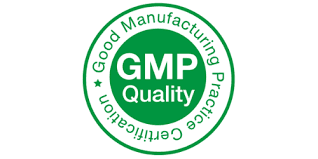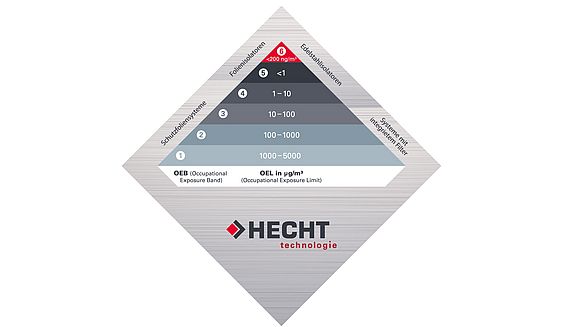Containment bijkomstigheden: cruciale overwegingen voor veiligheid en efficiëntie
Bij de planning en implementatie van containment systemen, vooral voor actieve ingrediënten in de farmaceutische industrie, is het essentieel om een aantal belangrijke factoren zorgvuldig te overwegen. Deze stappen waarborgen niet alleen de veiligheid van medewerkers, maar zorgen ook voor optimale procescontrole en kwaliteit.
1. Bepaal containment grenswaarden
Een van de eerste stappen is het vaststellen van de containment grenswaarden. Dit bepaalt welke mate van bescherming nodig is en helpt bij de keuze tussen primaire containment (de directe bescherming rondom het product) en secundaire containment (extra maatregelen in de omgeving). Primaire containment moet hierbij altijd de hoogste prioriteit krijgen om blootstelling aan gevaarlijke stoffen te minimaliseren.
2. OEL-waarde en OEB-niveau
De OEL (Occupational Exposure Limit) geeft de maximale veilige blootstelling aan een stof aan voor werknemers, terwijl het OEB (Occupational Exposure Band) een indeling is die stoffen categoriseert op basis van hun risico. Deze waarden zijn cruciaal bij het bepalen van het benodigde containment niveau. Ze worden vastgesteld door de fabrikant, meestal op basis van uitgebreide interne testen en richtlijnen.
3. Planning van het containment systeem
Essentiële aandachtspunten hierbij zijn:
Producten en hoeveelheden: Wat voor producten worden verwerkt en in welke volumes?
Frequentie van productwisselingen: Hoe vaak verandert het product? Dit bepaalt de flexibiliteit van het systeem.
Systeemfunctionaliteit: Is het systeem mono- of multifunctioneel?
Automatiseringsniveau: In hoeverre is automatisering gewenst om processen te optimaliseren?
4. Evaluatie van productkwaliteit en vloeigedrag
Belangrijk is te kijken naar de kwaliteit en fysische eigenschappen van het product, zoals vloeigedrag. Daarnaast moet de explosieveiligheid van het materiaal worden beoordeeld, omdat explosieveilige maatregelen soms verplicht zijn.
5. Planning van procesinterfaces
Cruciale onderdelen zoals doseersystemen, kleppen, uitlaatsystemen en filters moeten zorgvuldig worden ontworpen om optimale containment te garanderen. Daarnaast moeten interventiepunten voor operators slim worden gepland om onnodige blootstelling of inefficiënties te voorkomen.
6. Reinigingssystemen
Goede reiniging is onmisbaar om kruisbesmetting te voorkomen. Reinigingssystemen zoals WIP (Wash-in-Place) en CIP (Clean-in-Place) moeten niet alleen aanwezig zijn, maar ook gevalideerd worden op effectiviteit.
7. Onderhoud en reparatie
Regelmatig onderhoud is nodig, maar daarbij moet het systeem veilig te openen zijn, zonder dat stof ontsnapt. Het voorkomen van stofverspreiding tijdens onderhoud is essentieel voor een veilige werkomgeving.
Conclusie
Een grondige planning en evaluatie van containment systemen vormen de basis voor veiligheid en efficiëntie in productieprocessen. Door te focussen op het juiste containment niveau, systeemfunctionaliteit, reiniging en onderhoud, creëert u een effectief en veilig werkklimaat.
Meer informatie
Heeft u vragen over containment systemen of wilt u vrijblijvend advies? Neem contact op met Hecht Technology:
Telefoon: 085-0600 670
Website: https://hecht-technology.nl/
Industrieën: https://hecht-technology.nl/industrie/
Onze expertise: https://hecht-technology.nl/over-ons/
Wij adviseren u graag over containment, bulk handling, procesapparatuur, single use technology, sampling en andere componenten.
TL;DR
Voor een veilig en efficiënt containment systeem is het essentieel om containment grenswaarden, OEL- en OEB-waarden goed te bepalen. Plan het systeem met aandacht voor producteigenschappen, procesinterfaces, reiniging en onderhoud. Hecht Technology helpt u met deskundig advies en passende oplossingen voor uw containment uitdagingen. Neem contact op via of bezoek onze website voor meer informatie.
De gids voor Cleaning In Place
Toepassingen flexibele isolatoren





 Call Us
Call Us
 Mail Us
Mail Us
 WhatsApp
WhatsApp